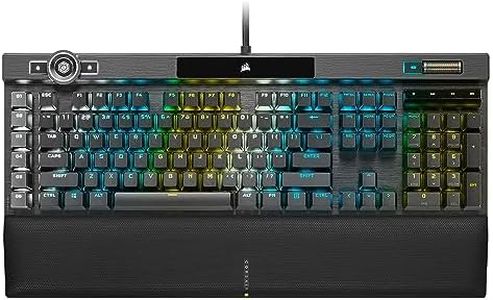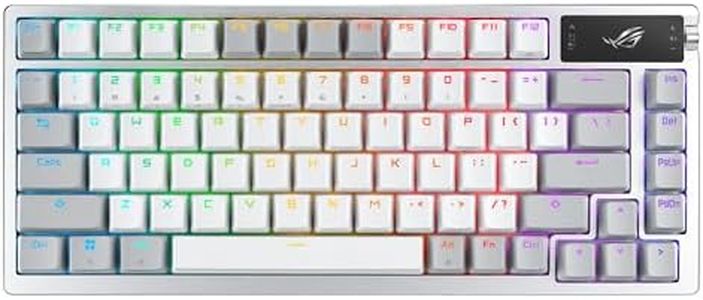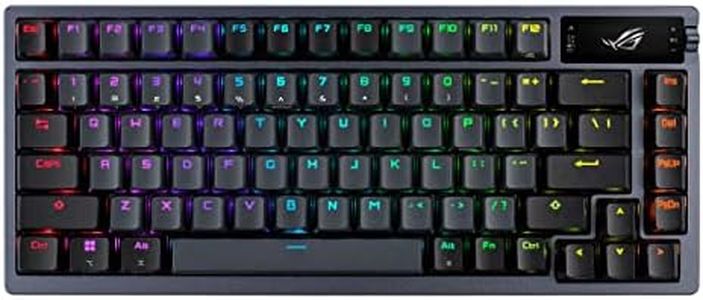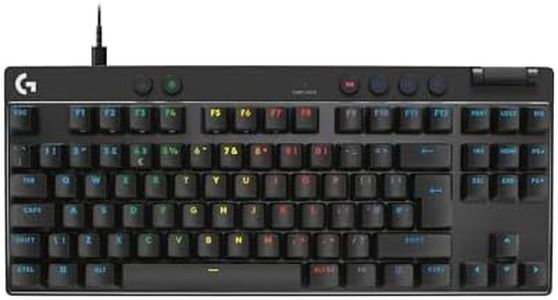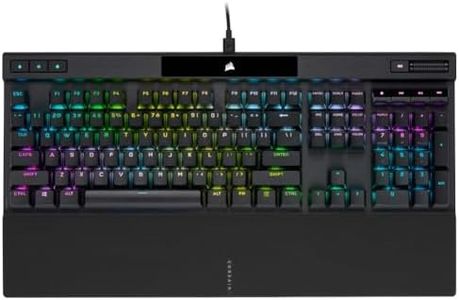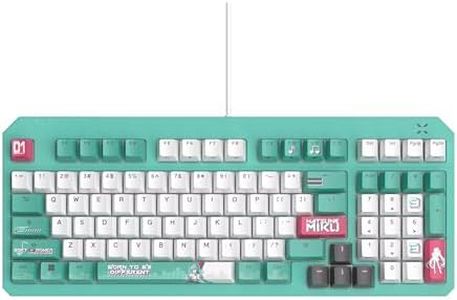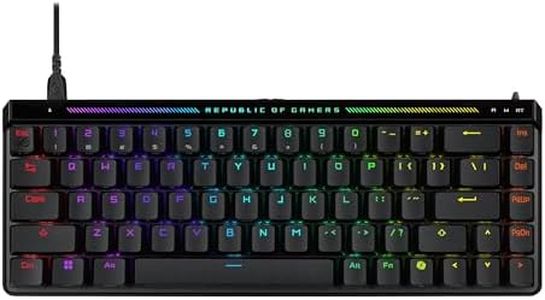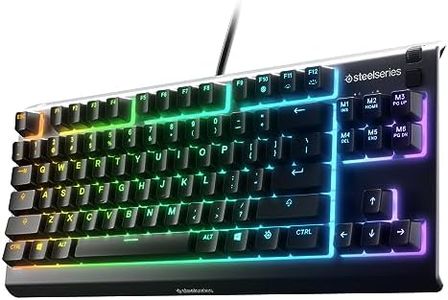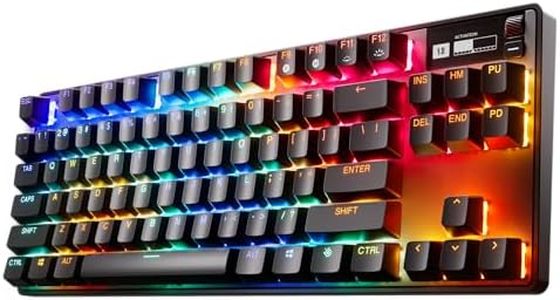We Use CookiesWe use cookies to enhance the security, performance,
functionality and for analytical and promotional activities. By continuing to browse this site you
are agreeing to our privacy policy
10 Best PC gaming keyboards
From leading brands and best sellers available on the web.By clicking on a link to a third party's website, log data is shared with that third party.
Buying Guide for the Best PC gaming keyboards
Choosing the right PC gaming keyboard can make a big difference to your comfort and performance while playing. A good gaming keyboard isn't just about fancy lights—it should match your gaming style, your comfort preferences, and even fit your desk setup. Whether you play fast-paced shooters or slower strategy games, the right keyboard can help you react faster and enjoy gaming more. It's important to understand which features really matter, so you can skip the hype and choose what will actually help you have a better time gaming.Switch TypeSwitch type refers to the mechanism under each key that registers your keypresses. This is crucial because it affects how the keyboard feels and sounds. Most gaming keyboards use either membrane or mechanical switches. Mechanical switches are further divided into types such as linear (smooth, quiet), tactile (a small bump, more feedback), or clicky (with a louder click sound). If you want fast, smooth keystrokes for quick reactions, linear switches are often preferred. If you like to feel feedback when your keypress is registered, tactile switches are a good choice. Clicky switches offer more sound and are sometimes favored if you want both sound and tactile response, but they can be noisy. Think about whether you game in a quiet environment, your comfort with noise, and how much feedback you like from your keys when picking a switch type.
Key Rollover and Anti-GhostingKey rollover means how many keys the keyboard can register at the same time. Anti-ghosting prevents 'phantom' keypresses when many keys are pressed together. These features matter in gaming because you might need to press multiple keys simultaneously during intense moments, such as moving, jumping, and reloading at the same time. Gaming keyboards usually offer at least 6-key rollover, while some have 'n-key' rollover (every key works at once). If you play fast games that require pressing many keys simultaneously, aim for higher rollover; for casual or slower-paced games, lower rollover is usually fine.
Backlighting and RGBBacklighting makes it easier to see your keys in the dark, while RGB (Red-Green-Blue) lighting lets you customize colors and effects for each key or the whole board. For many gamers, this is partly about style, but it also helps with visibility during late-night sessions. Some people prefer simple one-color lighting, while others like full RGB, which can be programmed for different games. If you care about the look and mood of your setup, or want key lighting cues for certain games, RGB may be a priority. If not, simple backlighting will work well.
Form Factor and SizeForm factor refers to the size and layout of the keyboard, such as full-size (with number pad), tenkeyless (TKL, without number pad), or even smaller compact sizes. Full-size keyboards give you every key, which is helpful if you use the number pad. Tenkeyless and compact versions save desk space and may be easier to carry to events. If you game in a small space or often travel with your keyboard, a smaller form factor might suit you. If you need all keys for work, data entry, or certain games, stick with full-size.
Build Quality and MaterialsBuild quality affects how long your keyboard will last and how solid it feels. Keyboards may use plastic or metal frames, with higher-end options being more durable. Some offer extra features like detachable cables or wrist rests. If you tend to be rough on your gear, or want something that will last for years, look for sturdier builds and good reviews for reliability. Lighter keyboards might feel less solid but can be easier to transport.
Programmable Keys and MacrosSome gaming keyboards let you set up custom keys or macros—series of actions triggered by a single button. This can be handy for complex games or if you want to perform tricky moves easily. If you're into games requiring lots of repetitive actions or want to customize shortcuts, look for a keyboard with easy-to-program macro keys. For simpler gaming or casual play, you may not need this feature.
Connection Type (Wired or Wireless)Game keyboards come in both wired and wireless versions. Wired keyboards never need charging and have zero delay, which can be important for high-speed gaming. Wireless keyboards reduce clutter and give you more freedom of movement but may need batteries or charging and could have slight delays. If you prioritize reliability and the lowest possible input lag, wired is the safer choice. If you want a neat desk or play from a distance, wireless might be better.




